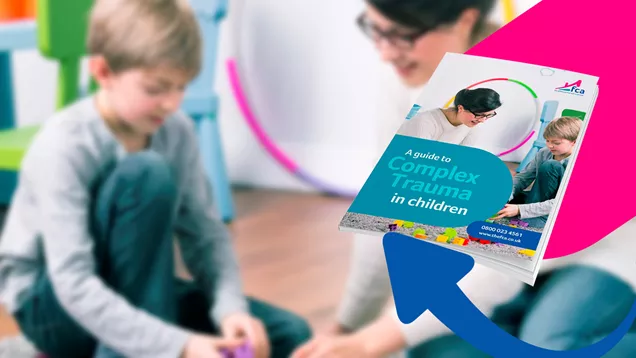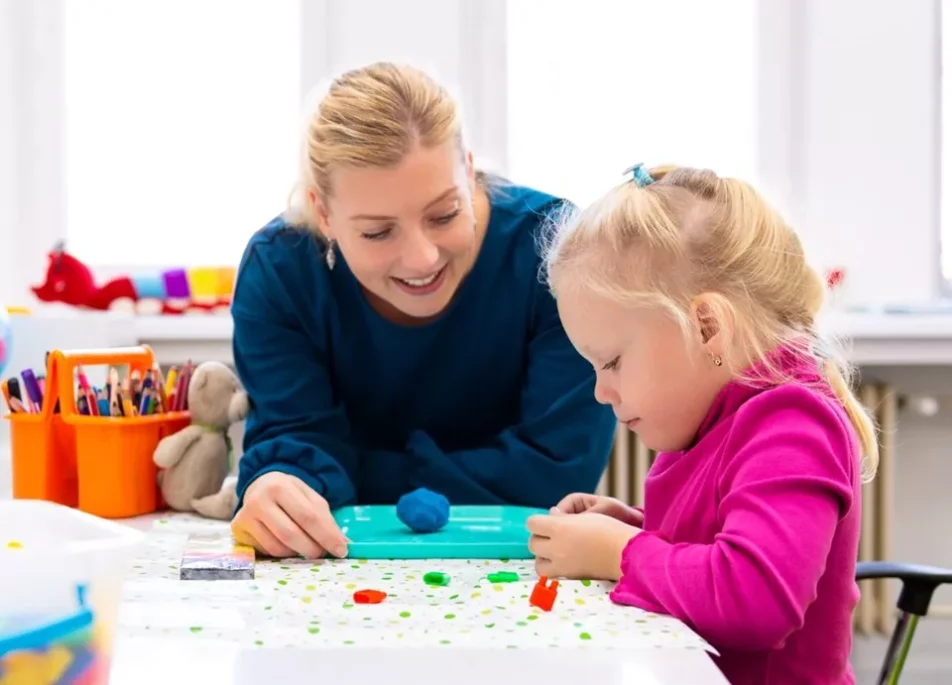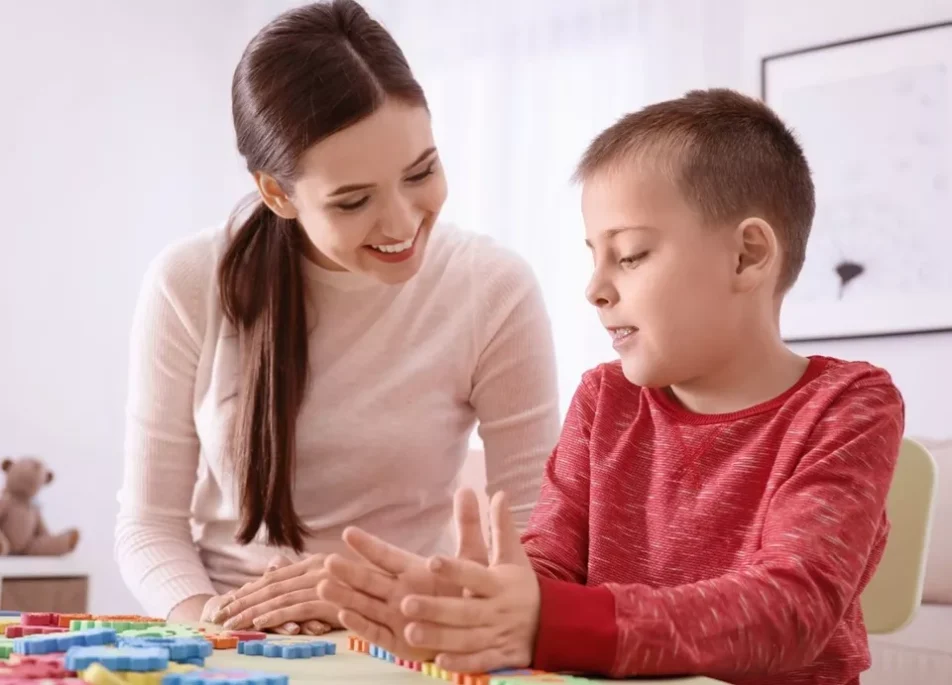Play therapy for trauma can be used to help children in foster care process and overcome their traumatic pasts by exploring emotions and communicating through play.
It’s an effective form of therapy that could give your foster child new coping mechanisms and a new outlook on life. Here’s how it works.
What Is Play Therapy for Trauma?
Play therapy techniques for trauma are used to help young children process traumatic events that have happened to them through the natural form of play. It’s a type of therapy that is less invasive as it relies on a child’s instinctual way to communicate and express themselves, as opposed to other more formal types of therapy that could be quite scary for a young child.
Play is such an integral part of the human experience. It has a vital role in our social, cognitive, physical, emotional and language development. Imagine a childhood without toys, games or make-believe? Even children who struggle with or have limited verbal communication can understand play, as it’s a universal language in itself.
Trauma affects all aspects of a child’s physiological and psychological growth, which is why a child with trauma may have difficulty regulating their emotions, managing impulse control or communicating their feelings. Play as a form of therapy is used to help these children directly deal with their unresolved trauma and make sense of themselves and the world in a fun, stimulating way.
When is play therapy used?
Play therapy is typically used for families and children who are between 3 and 12 years old, but it’s not exclusive to this age group. In the case of children in foster care, play techniques will be used to help them heal from traumatic events that happened early in life, which often leads to attachment issues.
Being separated from their birth family is traumatic enough, however many young children in care will have experienced abuse, neglect, domestic violence or the loss of a relative which can be hard to process and overcome. Play therapy is also useful for children with learning or developmental delays.
Your foster child may benefit from play therapy if they:
- Have experienced complex trauma early in life
- Have a serious medical condition that’s difficult to process or manage
- Have behavioural issues at home and/or at school
- Struggle to concentrate and focus, or have attention deficit hyperactivity disorder (ADHD)
- Have autism spectrum disorder (ASD)
- Have a learning disability
- Show signs of depression or anxiety
- Show signs of an eating disorder
How does play therapy work?
Children and adults communicate very differently, so it’s not easy for kids to articulate what they’re thinking or feeling to an adult. It can also be the case that adults don’t pick up on a child’s cues, from their speech to their body language.
Many children in foster care who have experienced trauma early in life have a lot of hurt and anger bottled up that they can’t express appropriately. Some may be emotionally numb, tense and closed up while others can have bouts of aggression, throw tantrums and say things they don’t mean.
That’s why in play therapy, the therapist joins the child in their creative, imaginative and playful world to gain a better understanding of what issues the child has and works with them to resolve the trauma. Children use play to express themselves, act out feelings, solve conflicts and understand relationship dynamics. A play therapist will observe how the child uses toys, as they might be symbols for something deeper, and use therapeutic activities to explore emotions and work through past events.
Directive Vs Non-directive Play
Play therapy activities for trauma can be directive or non-directive, which is also known as ‘free play’.
With free play, the child takes the lead. They choose the toys, crafts, books, games etc they want to play with and the therapist will pay close to attention to how the child interacts during the play session. They might notice dialogue between two action figures or troubling images in their paintings. By allowing the child free reign, this approach gives the therapist more room to uncover what the deep-rooted issues are.
With directive play, the therapist will have a clear goal in mind. Directive play therapy activities for trauma will be chosen by the therapist beforehand with the specific intention of guiding the child to discuss a particular topic or perhaps answer a sensitive and invasive question. The toys and games are predetermined and the child is gently guided throughout the session.
In both approaches to play therapy for trauma, the hope is that as the child continues to play, they’ll put down their defensive walls and become more open to sharing what’s on their mind, but it’s all done at the child’s pace. Helping young people with trauma doesn’t happen overnight, so it’s important that trust is established and the child doesn’t feel pressured to discuss anything they’re not ready for.
4 Types of Play Therapy Techniques for Trauma
All play therapy sessions take place in a relaxing, informal environment designed to make the child feel safe and at ease. Here are some the techniques used for trauma-informed play therapy that help fostered kids navigate their emotions to overcome unresolved trauma.
Dolls and action figures
This is a good way for a therapist to gauge family dynamics and understand how the child feels about different family members. Children may recreate dialogue or arrange the dolls in specific ways that could be reminiscent of their past experiences. Also, seeing how a child treats a pretend baby doll can be telling – are they mean towards it or do they nurture it? Their response could indicate to therapists, social workers and the foster family how they were treated in the past or how they feel about something that happened in the past.
Arts and crafts
Painting or creating a picture out of fun materials is an effective way to get children to communicate their feelings. Therapists may notice certain patterns in what the child chooses to draw or create that can help determine what’s wrong.
Storytelling
Children may feel safer discussing certain events, feelings, fears and anxieties while under the protection of an imaginary character. Storytelling and roleplaying using masks, finger puppets and toy phones can make children feel less vulnerable and more open to share.
Make-believe
Children may be given a magic wand and offered to make 3 wishes. What they wish for can be a direct response to how they’re feeling, which gives the play therapist insight about the issues or turmoil they’re facing. In non-directive play, therapists may notice if a child only opts for make-believe play, which could indicate they have a strong desire to escape their reality.
If you have a foster child that’s experienced trauma or you’re thinking of fostering and want to learn more about how trauma affects young people, download our comprehensive Guide to Complex Trauma in Children. Or, if you would like to know more about becoming a foster carer, please get in touch or and we’ll answer any questions you have.

A Guide to Complex Trauma in Children
Download the FCA’s guide to Complex Trauma in Children. Get deeper insight and advice into understanding complex trauma in children.

